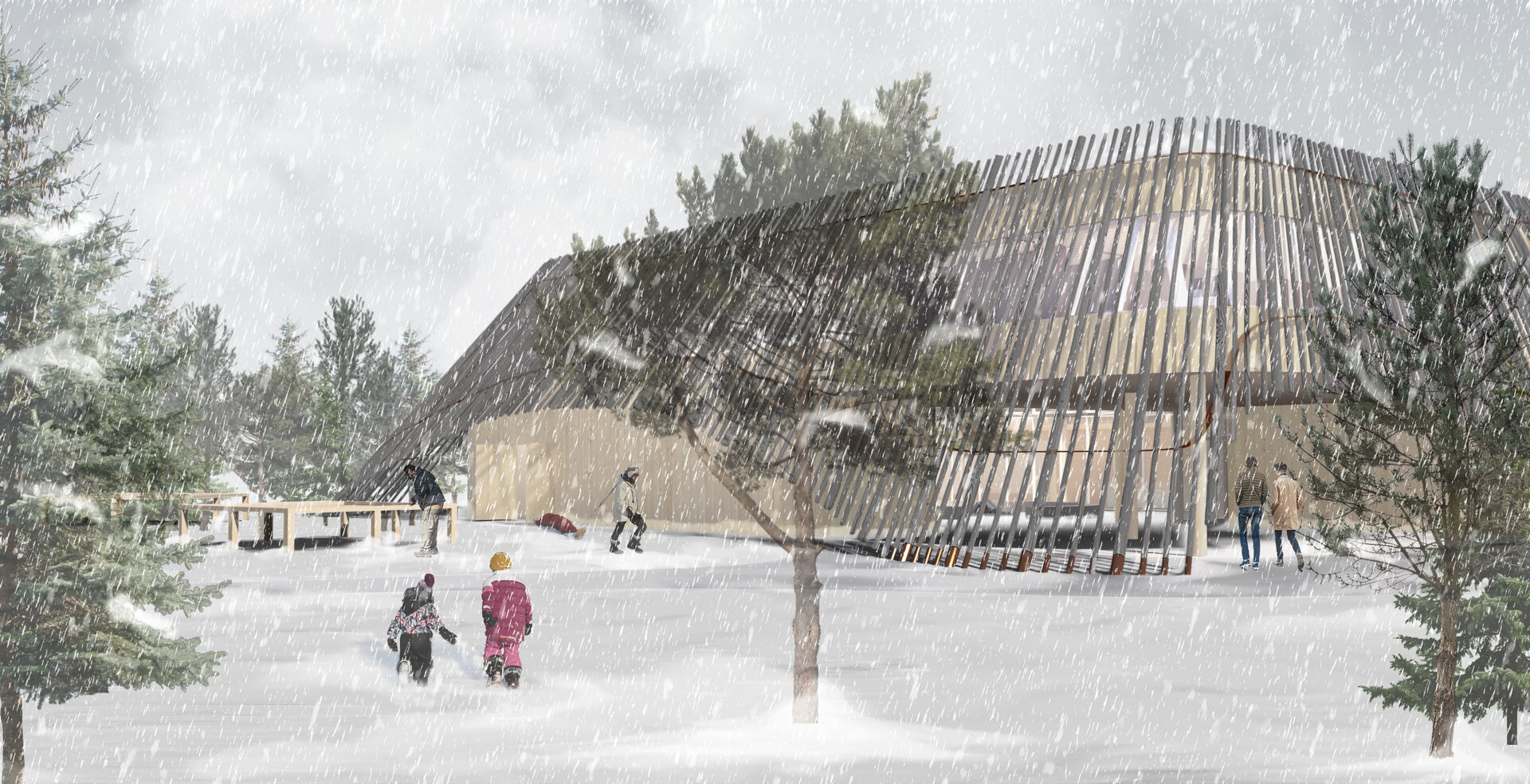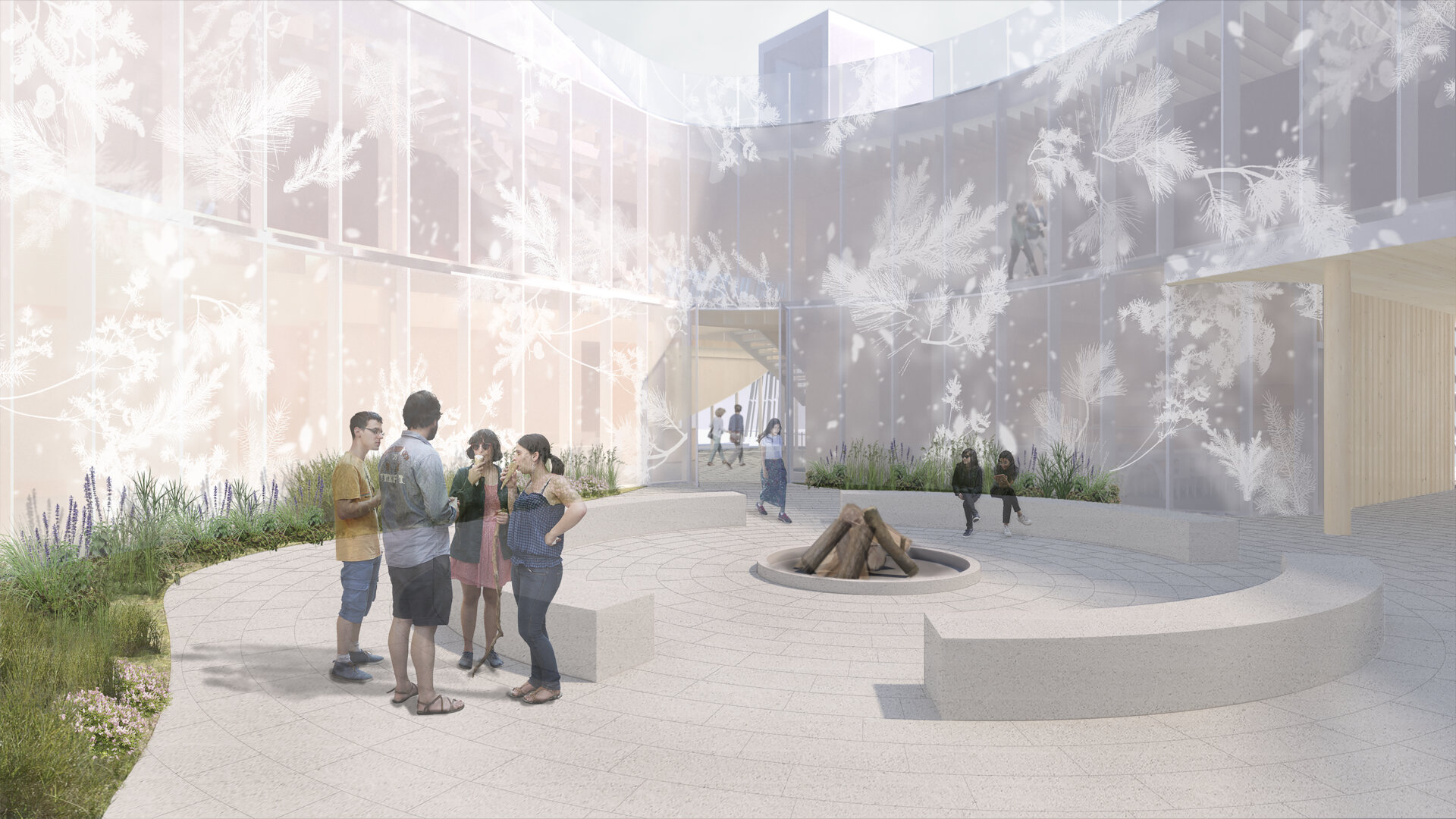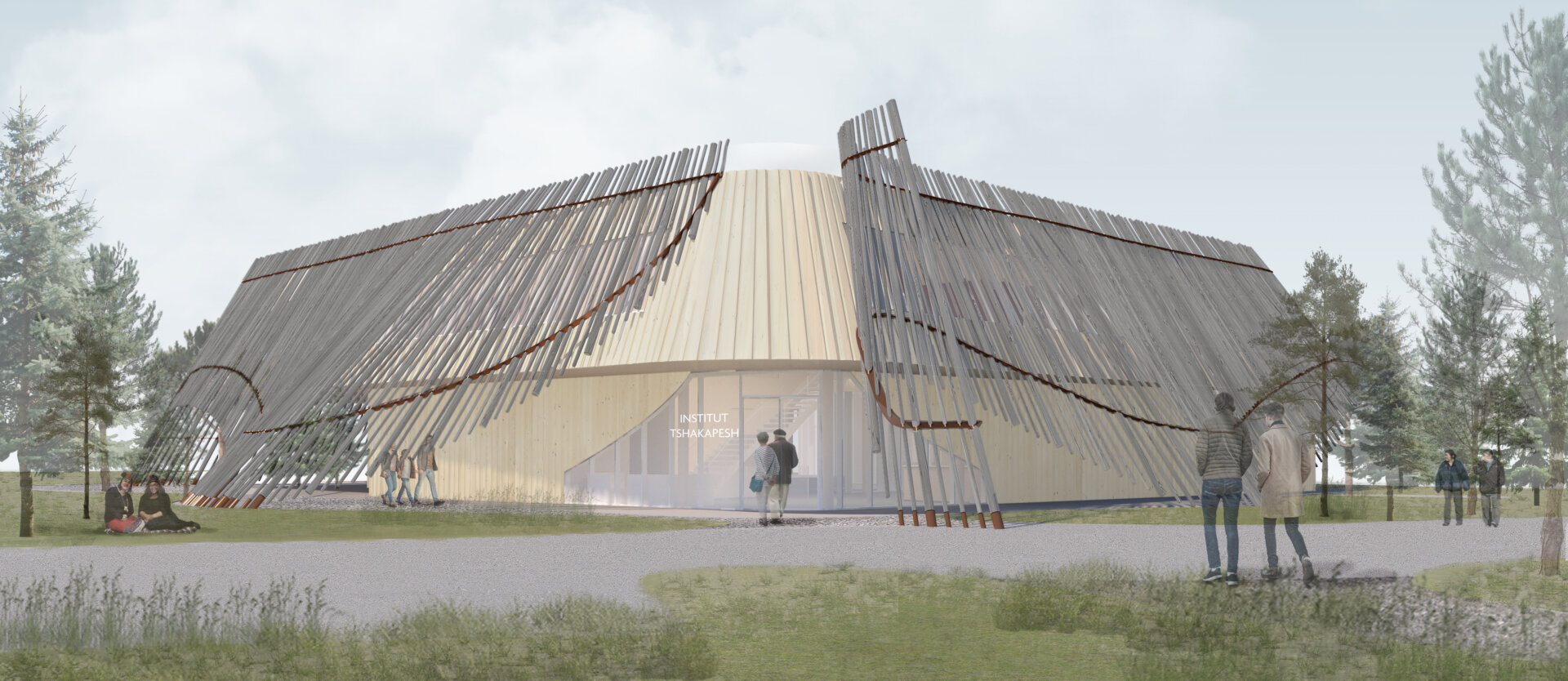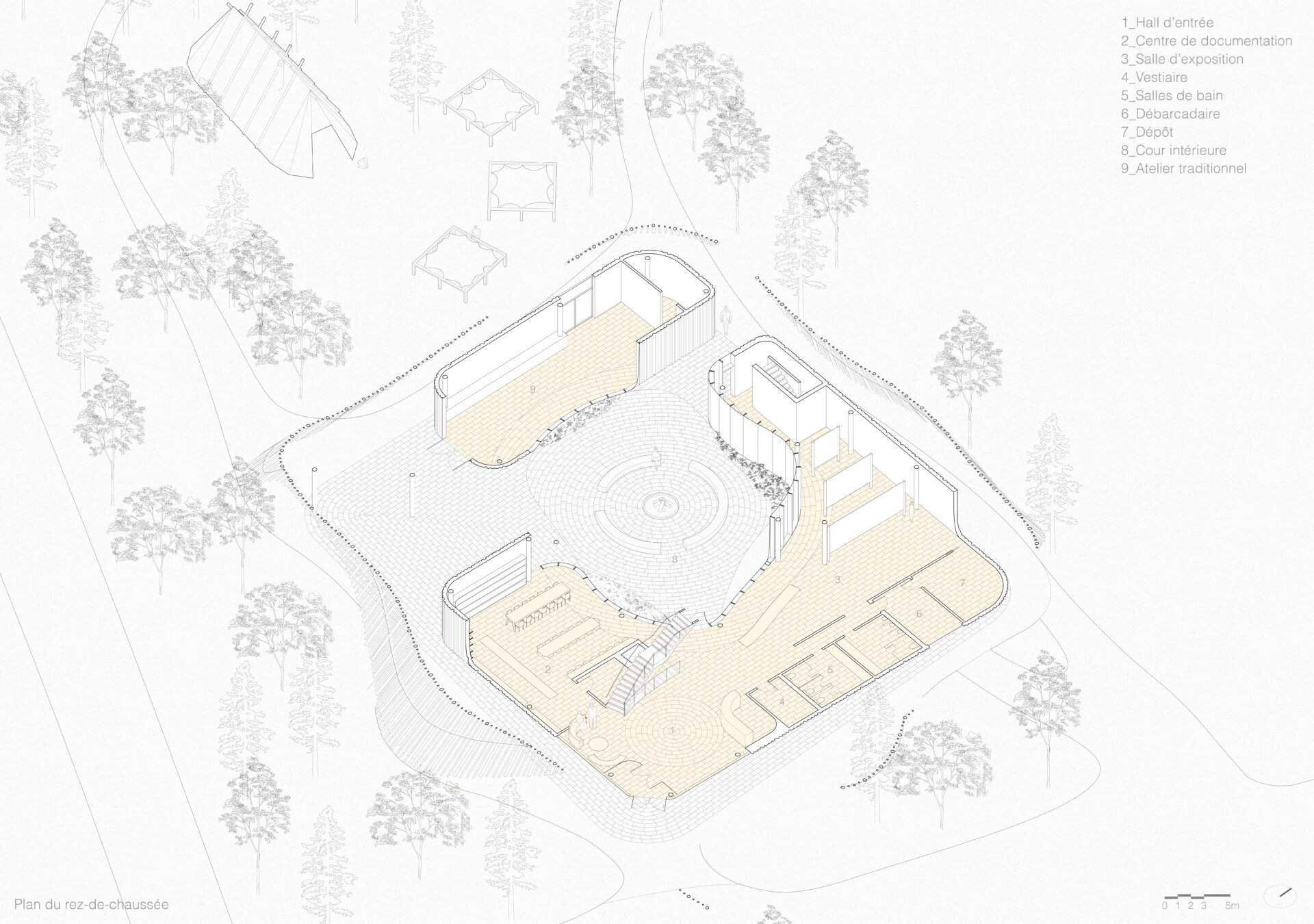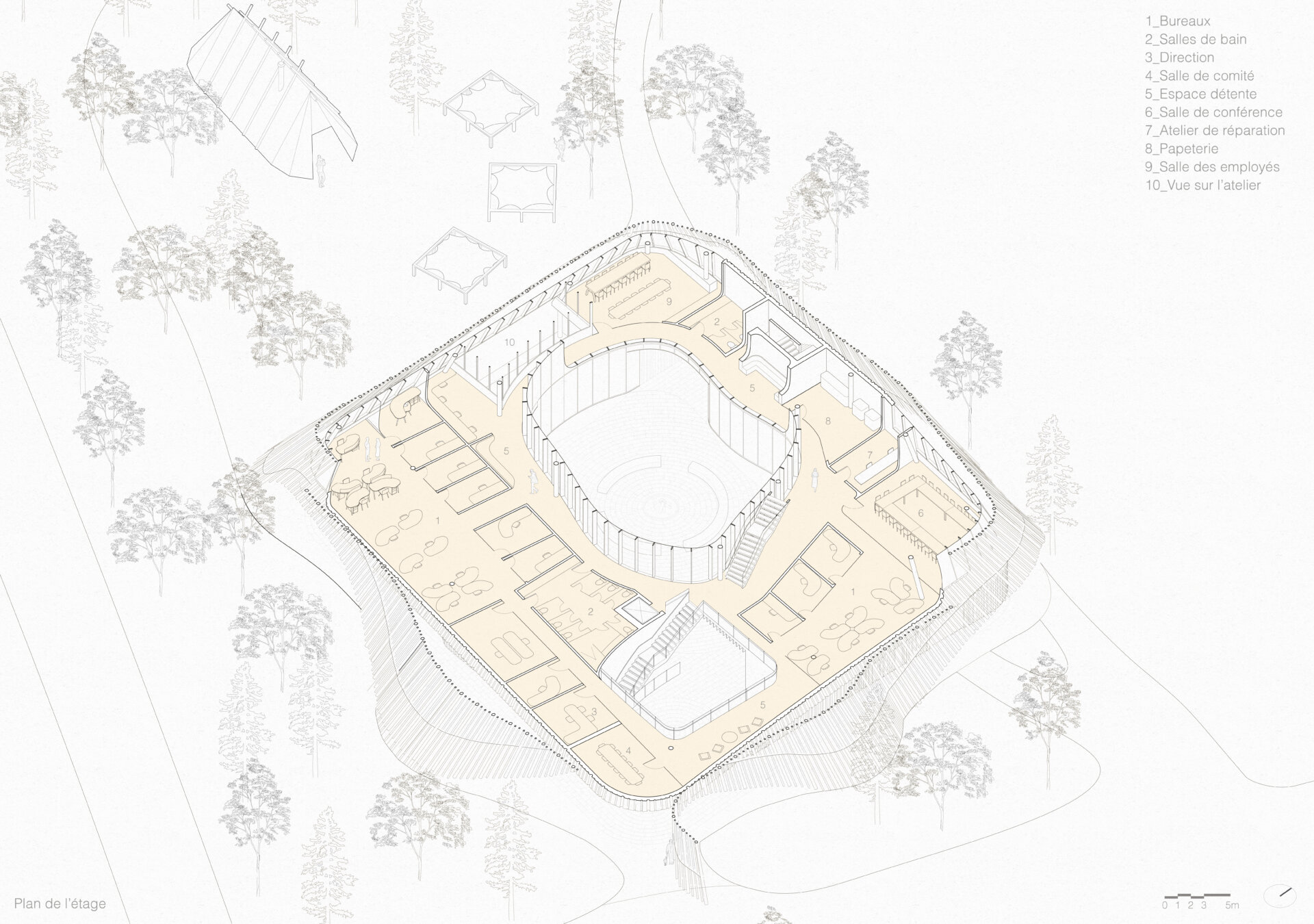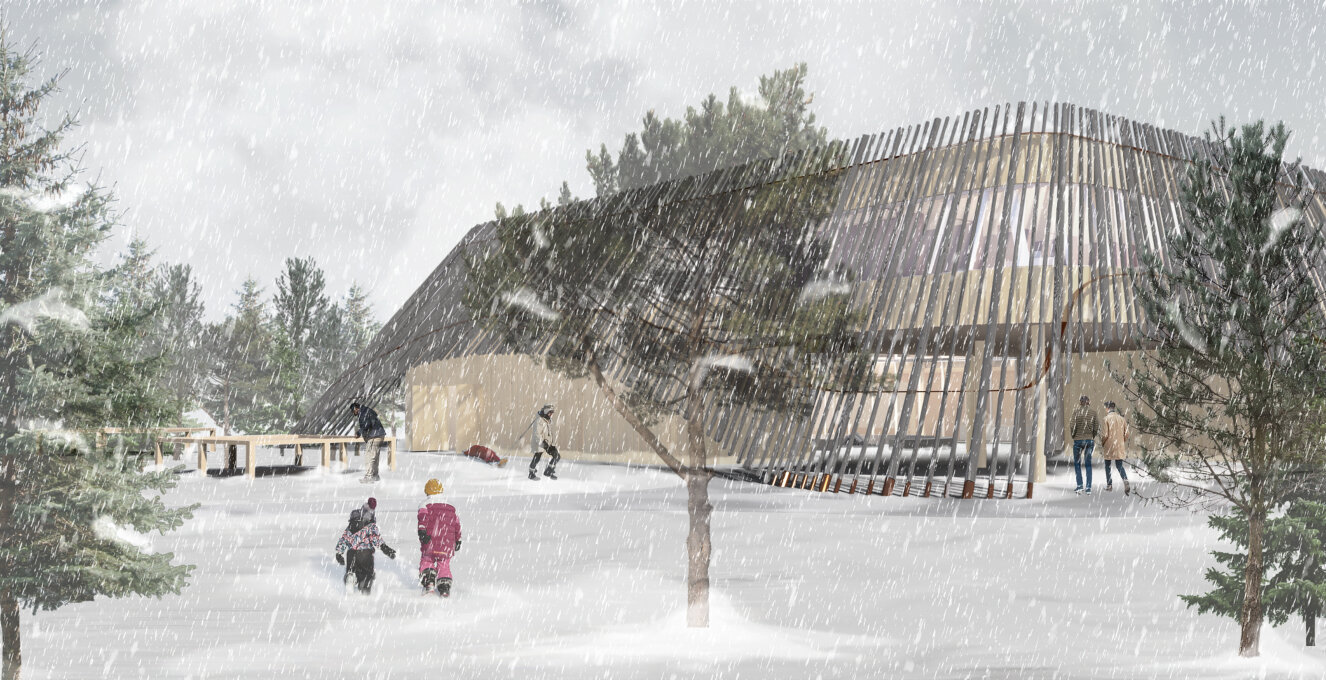
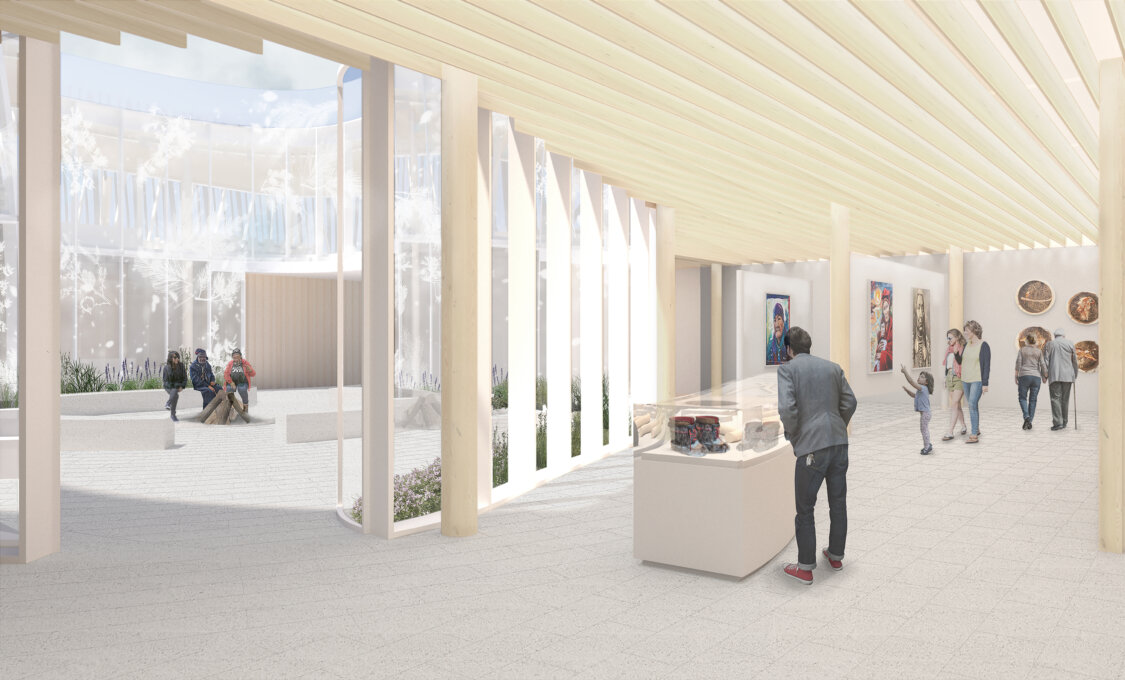
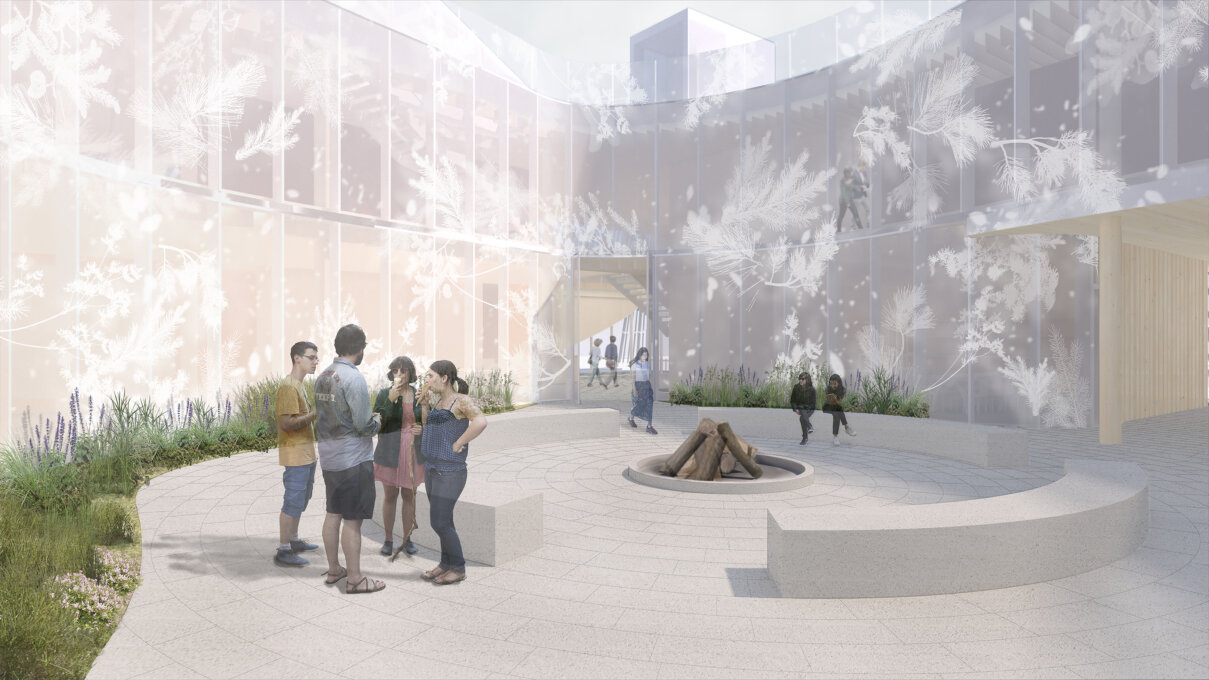
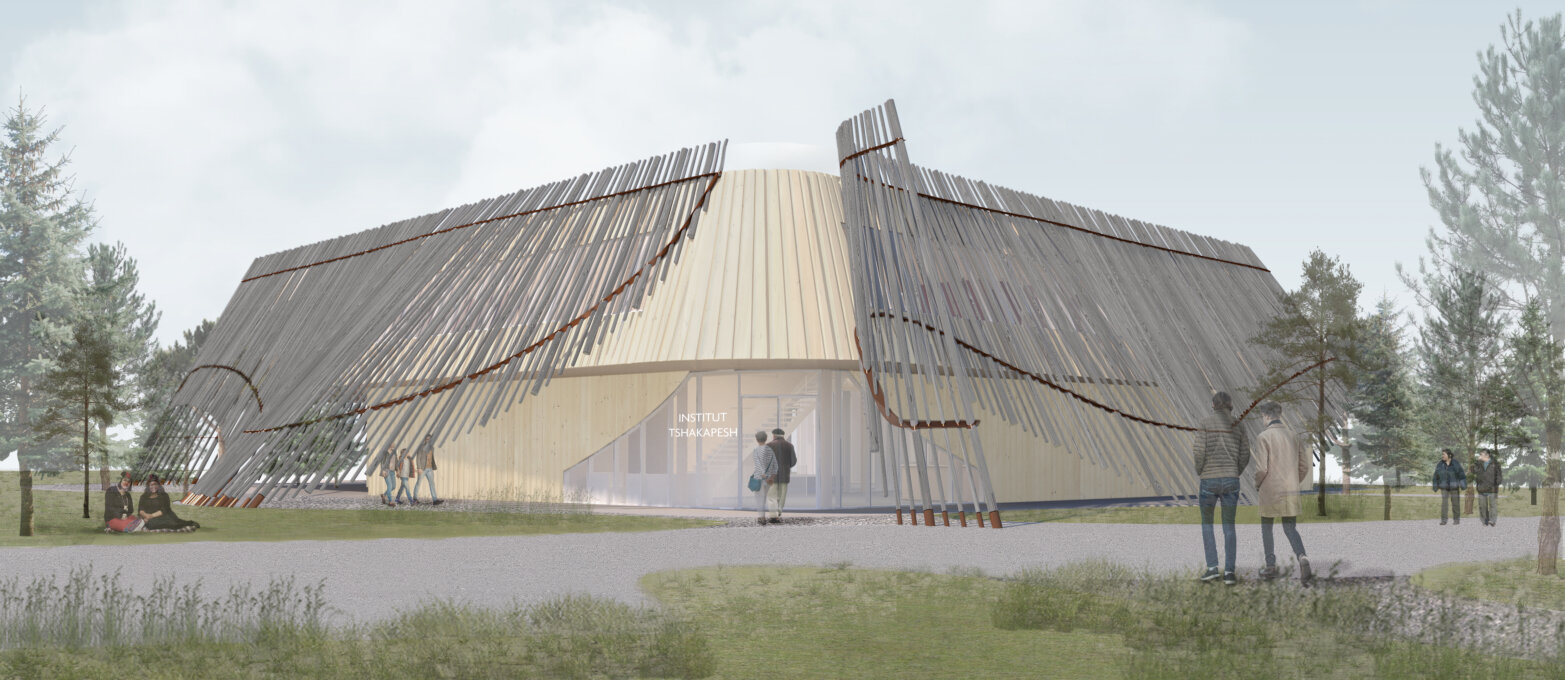
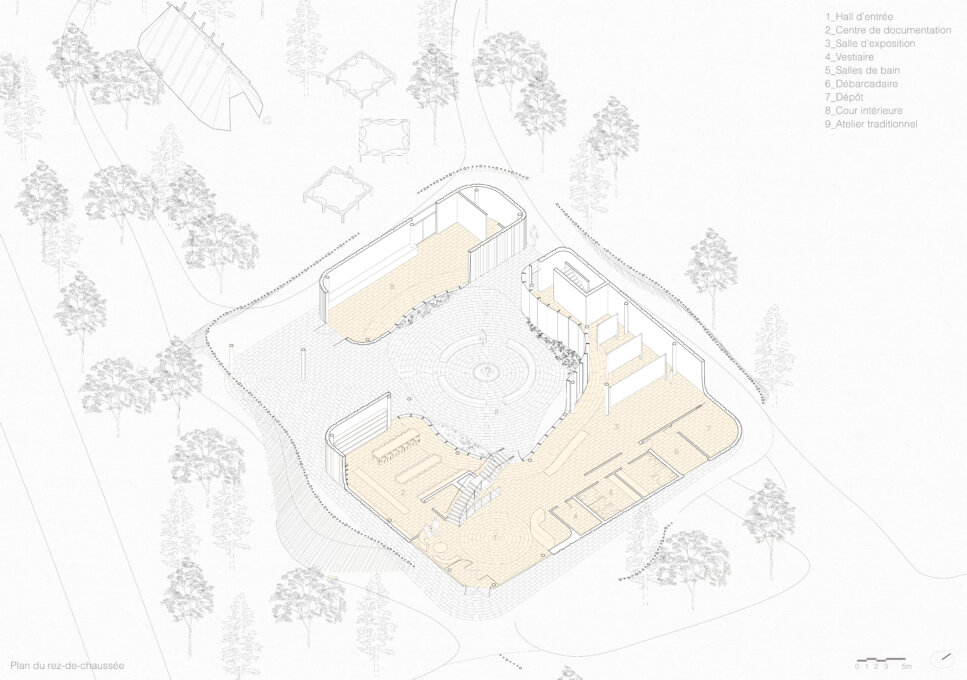
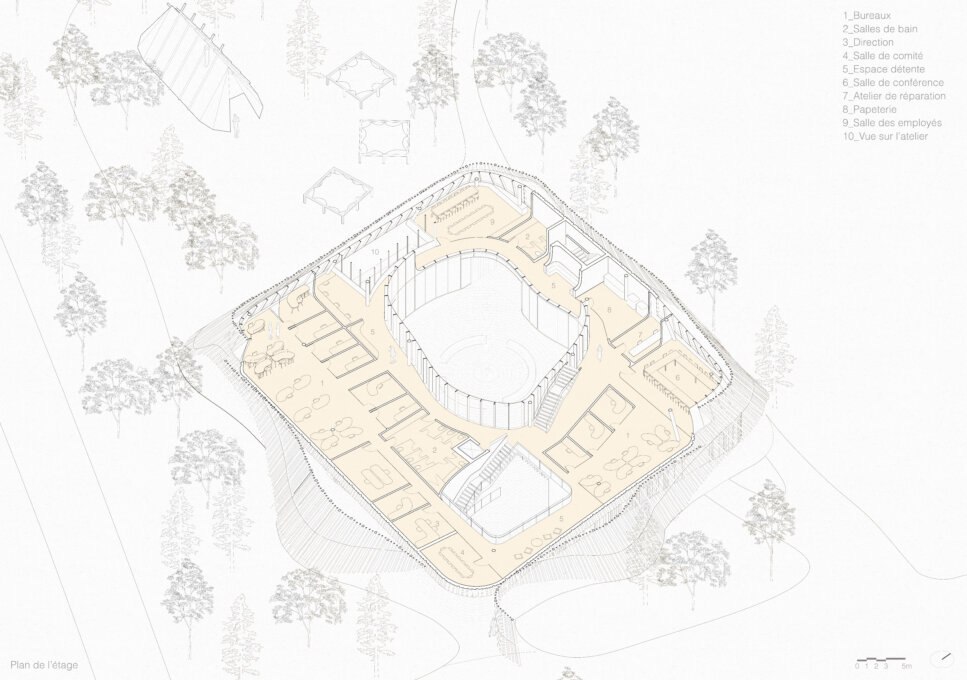
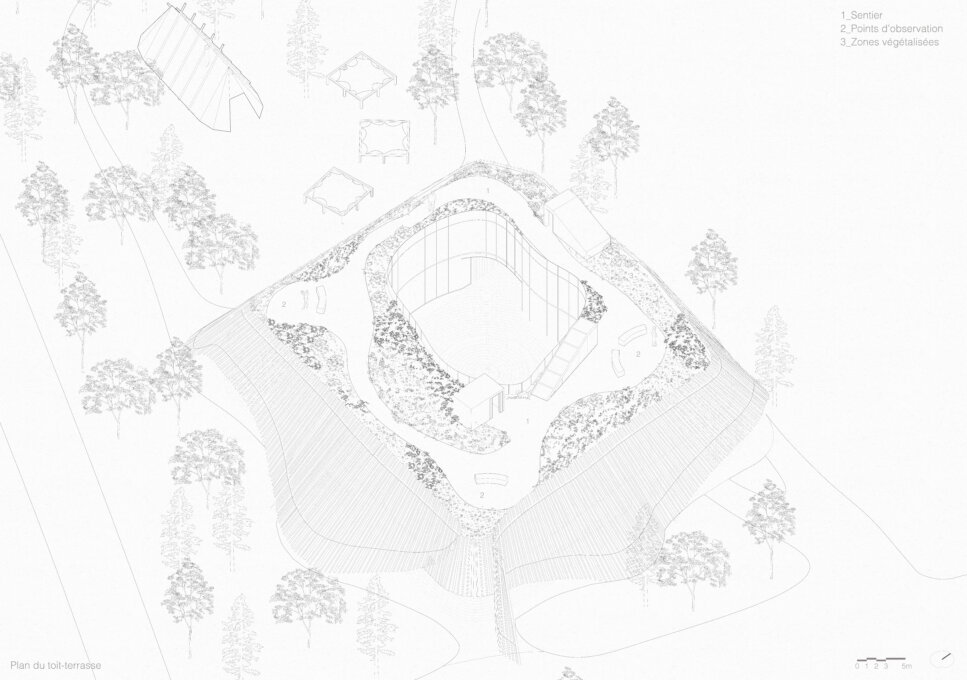
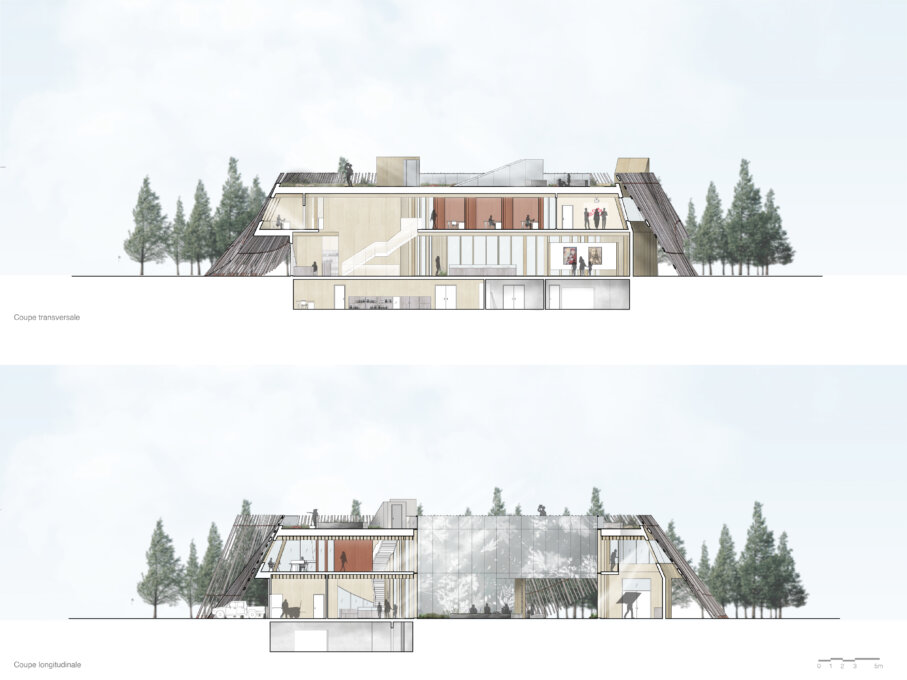


Share to
Institut Tshakapesh
By : Marie-Pier Bazinet, Pier-Olivier Cauchon et Mathias Madelein
GRANDS PRIX DU DESIGN – 15th edition
Discipline : Student
Categories : Students work / Student - Architecture : Platinum Winner
This proposal for the new Tshakapesh Institute aims to acknowledge and celebrate the Innu nation, its history and culture. The design was preceded by a period of research and meeting with people from the community. A sensible portrait emerged from this stage of work, throughout a tridimensional and colorful artwork that is a tribute to the strength and resilience of this nation.
The Institute promotes the education and offers language and cultural resources for all the Innu communities throughout Quebec. It is located at the entrance of Uashat mak mani-utenam, near Sept-Îles in the region of Côte-Nord. Le peuple rieur that was once a nomadic nation is still very attached to its territory even though it has become sedentary. This vast land that runs without any physical borders is characterized by the greatness of its landscapes, a distinct way of living and a sense of freedom.
In an attempt to dialogue with this territory, the project offers the visitors to explore different points of view so that they can connect with the landscape. The public spaces, including an exhibition room, a documentation center, and a traditional workshop, are located on the first floor. The multiple openings and the articulation of the envelope of the building, that is made of wooden poles, create a fluid circulation between the site and the building. Those poles are inspired by the structure of a traditional shelter that is called shaputuan, and they would be made by the community members allowing them to participate in building their own cultural center. The second floor is dedicated to the large and open office spaces that are designed to facilitate the communication and interactions between the different departments. This floor is surrounded by the canopy of the forest, and has different points of view toward the traditional activities that take place in the workshop below and outdoor. Finally, the roof is set as a belvedere that allows the visitors to contemplate the vast territory: from the St-Lawrence River to the Boreal forest and the majestic Moisie river.


